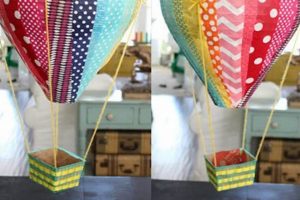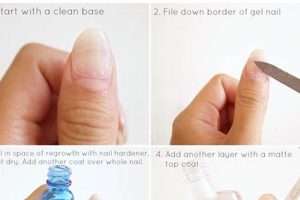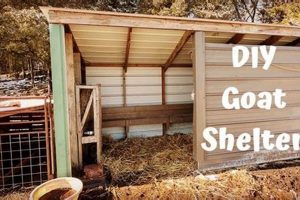The construction of bathing facilities by individuals, rather than professional contractors, is a growing trend in home improvement. These projects range from simple cosmetic upgrades to complete bathroom overhauls, typically involving the alteration or replacement of existing fixtures and materials. This approach offers a tailored solution to individual needs and preferences within a living space.
The rise in popularity stems from several key advantages, including cost savings, customization opportunities, and the personal satisfaction derived from hands-on creation. Historically, self-sufficiency in home maintenance was commonplace, evolving into a specialized trade with the advent of modern construction. However, accessible online resources and readily available materials have fueled a resurgence in owner-led projects, offering a blend of practical skill development and personalized home design.
The following discussion will delve into various aspects of undertaking such an endeavor, encompassing planning considerations, essential tools and materials, waterproofing techniques, tiling options, and safety protocols. Understanding these components is crucial for a successful and long-lasting outcome.
Essential Considerations for Self-Managed Shower Construction
Successful self-managed shower construction hinges on meticulous planning and adherence to established best practices. The following tips provide a framework for ensuring a durable, safe, and aesthetically pleasing result.
Tip 1: Thorough Planning is Paramount: Before commencing any physical work, a comprehensive design plan is essential. This plan should include precise measurements of the space, a detailed layout of fixtures, and a clear understanding of plumbing and electrical requirements. Neglecting this initial phase can lead to costly errors and delays.
Tip 2: Prioritize Waterproofing: Effective waterproofing is non-negotiable in shower construction. Employ high-quality waterproofing membranes and sealants, paying particular attention to corners, seams, and penetrations. Multiple layers may be necessary to ensure a robust barrier against moisture intrusion, preventing structural damage and mold growth.
Tip 3: Select Appropriate Materials: The materials used must be suitable for a wet environment. Opt for water-resistant or waterproof substrates, such as cement board or backer board, specifically designed for shower installations. Choose tile materials with low porosity and high slip resistance to enhance safety and longevity.
Tip 4: Adhere to Building Codes: Familiarize yourself with local building codes and regulations pertaining to plumbing, electrical, and structural requirements. Compliance with these codes is crucial for safety and legality, and may necessitate inspections at various stages of the project.
Tip 5: Ensure Proper Ventilation: Adequate ventilation is essential for preventing moisture buildup and mold growth within the shower enclosure. Install an exhaust fan with sufficient CFM (cubic feet per minute) capacity to effectively remove steam and humidity. Consider incorporating a window for natural ventilation when feasible.
Tip 6: Focus on Proper Slope: Ensure the shower floor has a consistent and adequate slope toward the drain to facilitate water runoff. A slope of approximately 1/4 inch per foot is generally recommended. Inadequate slope can lead to standing water and increased risk of leaks.
Tip 7: Invest in Quality Tools: Utilizing the appropriate tools is crucial for achieving professional-grade results. Invest in quality tile saws, grout floats, levels, and measuring instruments. Renting specialized tools may be a cost-effective option for infrequent use.
Diligent application of these tips will contribute significantly to the successful completion of the undertaking, resulting in a functional and visually appealing addition to the home.
The next section will address potential challenges and troubleshooting strategies that may arise during the course of shower construction.
1. Planning and Design
The planning and design phase of a self-constructed shower enclosure fundamentally determines the project’s ultimate success or failure. Insufficient initial planning frequently results in costly revisions, material waste, and structural deficiencies. A detailed design should encompass precise measurements of the installation space, a comprehensive layout of plumbing and electrical components, and a clear specification of the desired aesthetic features. Without a well-defined plan, unforeseen obstacles are likely to arise, potentially compromising the project’s timeline and budget. For example, failing to accurately measure the available space before purchasing shower trays or doors can lead to incompatibility issues requiring returns, re-ordering, and significant delays.
Moreover, a robust design plan addresses critical functional aspects, such as drain placement, showerhead height, and the integration of accessibility features if required. Neglecting these considerations can result in an unusable or inconvenient shower experience. Consider a scenario where the drain location is improperly planned, leading to inadequate water runoff and the formation of stagnant pools, which subsequently promotes mold growth and necessitates expensive remediation. The design phase should also account for structural load-bearing capacity, particularly in older homes where existing framing may require reinforcement to support the weight of tile and mortar.
In conclusion, meticulous planning and design are not merely preliminary steps but integral components of successful shower construction. They serve as a blueprint, guiding the entire process and mitigating potential risks. Thorough planning ensures efficient material utilization, minimizes errors, and ultimately yields a durable, functional, and aesthetically pleasing showering space. Failure to prioritize this phase introduces significant uncertainty and increases the likelihood of unsatisfactory results.
2. Waterproofing Imperative
Effective waterproofing constitutes a non-negotiable element in the successful execution of a self-managed shower enclosure construction. Inadequate attention to this aspect can lead to severe structural damage, the proliferation of mold and mildew, and ultimately, the premature failure of the entire installation. The following outlines key facets of waterproofing within the context of these projects.
- Substrate Preparation and Selection
The selection and preparation of the substrate beneath the waterproofing membrane are paramount. Cement backer board or similar water-resistant materials designed specifically for wet environments must be used. Proper installation, including ensuring a level and stable surface, is essential for the membrane to function effectively. Failure to adequately prepare the substrate ca
n result in uneven membrane application, compromised adhesion, and subsequent water intrusion. - Membrane Application Techniques
The proper application of the waterproofing membrane is crucial. Liquid-applied membranes, sheet membranes, and other waterproofing systems must be applied according to the manufacturer’s specifications, paying particular attention to coverage, thickness, and curing times. Improper application techniques, such as insufficient overlap at seams or inadequate thickness, will compromise the membrane’s integrity and allow water penetration.
- Sealing Penetrations and Transitions
All penetrations through the waterproof barrier, such as pipes and shower fixtures, require meticulous sealing. Similarly, transitions between different materials or surfaces must be carefully addressed. Specialized sealants and reinforcing fabrics are often employed to ensure a watertight seal around these vulnerable areas. Failure to properly seal these penetrations represents a significant point of entry for water, negating the effectiveness of the overall waterproofing system.
- Testing and Inspection
Prior to tiling, the completed waterproofing membrane should undergo rigorous testing to verify its integrity. Flood testing, where the shower pan is filled with water and monitored for leaks, is a common method. Visual inspection for imperfections, such as pinholes or thin spots, is also essential. Early detection of leaks or weaknesses allows for timely repairs, preventing costly and extensive damage in the future. Independent third-party inspection may also be considered to ensure unbiased evaluation.
Collectively, these facets of waterproofing contribute to the long-term durability and performance of shower enclosure. Strict adherence to best practices and meticulous attention to detail are essential for preventing water damage and ensuring a safe and functional showering space.
3. Material Selection Criteria
The selection of appropriate materials is paramount to the success and longevity of any self-constructed shower enclosure. Informed choices regarding materials directly impact water resistance, structural integrity, ease of installation, and overall aesthetic appeal of the finished project. A comprehensive understanding of material properties and their compatibility within the shower environment is therefore essential.
- Water Resistance and Impermeability
The primary function of shower materials is to withstand constant exposure to moisture. Non-porous options such as porcelain tile, solid surface materials, and certain epoxy grouts are preferred. Permeable materials, if used, require robust waterproofing beneath them. For example, natural stone tiles, while aesthetically pleasing, necessitate thorough sealing and potentially more frequent maintenance due to their inherent porosity, which can lead to staining and water absorption if not adequately protected.
- Durability and Structural Integrity
Materials used in a shower enclosure must be capable of withstanding daily use and temperature fluctuations without cracking, warping, or degrading. Cement backer board serves as a stable substrate for tile, providing a rigid and durable base. Acrylic shower pans offer resistance to impact and cracking, while glass enclosures provide both aesthetic appeal and structural support. Utilizing inferior materials, such as drywall behind tile in wet areas, inevitably leads to moisture damage and structural failure.
- Ease of Installation and Workability
The ease with which materials can be cut, shaped, and installed directly impacts the efficiency and quality of a DIY project. Smaller tile sizes can simplify the process of creating sloped shower floors, while larger format tiles minimize grout lines and offer a more seamless appearance. Ready-to-install shower kits provide pre-fabricated components that streamline the installation process, reducing the risk of errors and minimizing the need for specialized tools. Consider the skill level and available tools when choosing materials.
- Maintenance and Cleanability
The ease of cleaning and maintenance is a crucial long-term consideration. Materials that are resistant to staining, mold growth, and soap scum buildup are highly desirable. Epoxy grout, for example, is less porous than traditional cement-based grout and offers superior resistance to staining and mildew. Non-slip surfaces are also important for safety and should be easy to clean to prevent the buildup of bacteria and grime.
Careful consideration of these material selection criteria will result in a shower enclosure that is both aesthetically pleasing and functionally durable, providing years of reliable service. The choices made in this phase of the project directly influence the overall cost, long-term maintenance requirements, and the satisfaction derived from the finished DIY shower.
4. Code Compliance Adherence
Code compliance adherence represents a critical, legally mandated aspect of shower construction, particularly in self-directed projects. Failure to adhere to established building codes can result in safety hazards, structural deficiencies, and legal repercussions, including fines and mandatory remediation. Local codes dictate specific requirements for plumbing, electrical systems, waterproofing, ventilation, and structural integrity within shower enclosures. A common example is improper drain slope, which, if not conforming to the prescribed minimum, can lead to water pooling, creating a breeding ground for mold and posing a slip hazard. Ignoring electrical code requirements, such as Ground Fault Circuit Interrupter (GFCI) outlet placement, increases the risk of electrocution in a moisture-rich environment. The consequences of neglecting these regulations extend beyond inconvenience, potentially endangering occupants and diminishing property value.
The practical significance of code compliance extends to long-term maintenance and future renovations. Correctly installed plumbing and electrical systems, conforming to relevant codes, facilitate easier repairs and modifications, avoiding costly and disruptive rework. For instance, proper pipe sizing and venting, as dictated by plumbing codes, ensures adequate water pressure and prevents sewer gas backflow. Similarly, adherence to electrical wiring standards ensures the safe and efficient operation of shower lighting and ventilation systems. Neglecting these standards can lead to recurring plumbing issues, electrical malfunctions, and the need for extensive, code-compliant upgrades later.
In summary, strict code compliance is not merely a procedural formality but a fundamental requirement for ensuring the safety, durability, and legal acceptability of a shower enclosure. Understanding and adhering to local building codes mitigates potential risks, facilitates future maintenance, and protects both the occupants and the property. Consequently, individuals undertaking such projects must prioritize thorough research, consultation with local building authorities, and, if necessary, professional assistance to ensure full compliance with all applicable regulations.
5. Ventilation Strategies
Adequate ventilation within a shower enclosure, particularly in a self-constructed or “diy shower” context, is not merely an aesthetic preference, but a fundamental requirement for preventing moisture-related damage and ensuring occupant health. Insufficient ventilation precipitates a cascade of adverse effects, including the proliferation of mold and mildew, degradation of building materials, and potential respiratory health issues. Condensation build-up, a direct consequence of inadequate air exchange, fosters an environment conducive to microbial growth on surfaces such as tile grout, drywall, and wood framing. This, in turn, leads to unsightly staining, unpleasant odors, and structural weakening over time. For example, a shower constructed without a properly sized exhaust fan will exhibit persistent moisture accumulation on walls and ceilings, fostering mold growth within a relatively short period, ultimately necessitating costly remediation.
Effective strategies incorporate both passive and active ventilation methods. Passive ventilation involves the utilization of windows or vents to facilitate natural air circulation. However, reliance solely on passive methods is often insufficient, particularly in enclosed spaces or during periods of high humidity. Active ventilation, typically achieved through the installation of an exhaust fan, provides a more reliable and controllable means of removing moisture-laden air. The selection of an appropriate exhaust fan requires consideration of the shower enclosure’s size, the frequency of use, and the local climate. Undersized fans will fail to adequately remove moisture, while oversized fans may result in excessive energy consumption. Installation must adhere to building codes and electrical safety standards, including proper wiring and ducting to ensure efficient and safe operation. Furthermore, regular maintenance, such as cleaning the fan blades and vents, is essential for maintaining optimal performance.
In summary, the implementation of robust ventilation strategies is inextricably linked to the long-term success of a “diy shower” project. Neglecting this aspect compromises the structural integrity of the enclosure, endangers occupant health, and ultimately diminishes the value of the investment. A comprehensive approach, incorporating both passive and active ventilation methods, coupled with diligent maintenance, is essential for creating a safe, durable, and healthy showering environment. The selection and installation of appropriate ventilation systems represent a critical skill for anyone undertaking the construction of a shower enclosure.
Frequently Asked Questions About Shower Self-Construction
The following addresses common inquiries and misconceptions regarding the process of constructing a shower enclosure without professional assistance.
Question 1: Is constructing a shower enclosure without professional assistance advisable for individuals with limited experience in home renovation?
Undertaking such a project requires a foundational understanding of plumbing, waterproofing, tiling, and electrical safety. Individuals lacking this knowledge are advised to seek professional consultation or consider simpler home improvement projects.
Question 2: What are the most critical factors to consider when waterproofing a self-constructed shower?
Proper substrate preparation, selecting a high-quality waterproofing membrane, and meticulously sealing all penetrations are paramount. Multiple layers of sealant and rigorous testing for leaks are essential to prevent water damage.
Question 3: How does one ensure adherence to local building codes during a self-managed shower renovation?
Consultation with local building authorities and thorough review of applicable codes is mandatory. Permits may be required, and inspections are often conducted at various stages of the project to verify compliance.
Question 4: What type of ventilation is necessary to prevent mold growth in a shower enclosure?
An exhaust fan with sufficient CFM (cubic feet per minute) capacity, determined by the size of the shower, is crucial. Proper ducting to the exterior of the building is also required. Additionally, incorporating a window for natural ventilation can supplement the exhaust fan’s effectiveness.
Question 5: What are the potential long-term consequences of neglecting proper slope in a shower floor?
Inadequate slope leads to standing water, promoting mold and mildew growth, and potentially causing slip hazards. Remediation often involves costly repairs and may require complete demolition of the shower floor.
Question 6: How does the selection of tile materials impact the overall durability and safety of a shower?
Tile materials should be non-porous, slip-resistant, and resistant to staining. Smaller tile sizes are easier to install on sloped surfaces, while larger tiles minimize grout lines, reducing the potential for water penetration. The chosen materials must withstand constant moisture exposure and temperature fluctuations.
In summary, thorough planning, meticulous execution, and adherence to best practices are essential for successful shower self-construction. Understanding and addressing these common concerns mitigates potential risks and ensures a safe, durable, and aesthetically pleasing outcome.
The following section will provide a detailed checklist of tools and materials required for shower construction.
Conclusion
The preceding exploration of “diy shower” projects underscores the necessity for meticulous planning, rigorous execution, and unwavering adherence to established building codes. Successful implementation hinges on thorough understanding of waterproofing techniques, appropriate material selection, and effective ventilation strategies. Failure to address these critical aspects jeopardizes structural integrity and poses significant health risks.
Prior to commencing a “diy shower” construction, individuals must carefully assess their skill level, available resources, and the potential ramifications of non-compliance. While cost savings and customization are attractive incentives, the long-term consequences of a poorly executed project far outweigh any perceived benefits. Therefore, a well-informed decision, potentially involving consultation with qualified professionals, is paramount to ensure a safe, durable, and code-compliant showering enclosure. The ultimate responsibility rests with the individual to prioritize safety and quality over expediency and cost.







